I’m looking at the date and it says 2010. That seems more futuristic to me than 2001 did for some reason. So we are in the future, where are the flying cars? Flying cars are what I call a zombie technology, an idea that just won’t die no matter how ludicrous. I’ve been researching rapid transit for many years now and what continues to fascinate me is how some ideas never die. The first zombie idea of rapid transit is Monorails which still hold their 1960s futuristic charm even though they always come up short compared to conventional rail. The second idea, and the subject of this rant post is Personal Rapid Transit (PRT).
Before I rant on I want to make on caveat which is that light fixed-gruideway transit is excellent as a more affordable option for getting a few people from point A to point B, or Terminal A to Terminal B, since they are great for airports. But this isn’t PRT in the sense I’m talking about it.
What got me thinking about this subject was the realization that over the course of a month I really only make a few different journeys. I decided to draw a map of these places and once I did I realized that I could connect them by way of (as my mind works) a subway, or PRT, system. Since most of my journeys are from my home to work, a friends place, or for afterhours fun (such is the life of a 25 year old male); mapping my routes is pretty simple. I also included a “commuter rail” line back to Boston when I want to visit my friends and relatives (cuz, you know, if I’m building my own personal subway, why not?) Also, now that you all know where I usually go, please don’t stalk me now.
The idea is simple: Take the efficiency of mass transit and combine it with the rugged individualism of the American spirit. PRT systems are usually based on the idea that while the automobile is great for getting one or a few people from point A to point B, when millions of automobiles all try to get to different point As and point Bs that the current system of roads breaks down. The answer is always some sort of fixed tramway system where everyone has their own vehicle which will be driven automatically so traffic will become a thing of the past (oh traffic, you eternal evil!) The more advanced systems have the ability of allowing a vehicle to attach and detach from the fixed system and be driven along conventional roads. This feature would be beneficial since it would free people from only being able to go where the system existed.
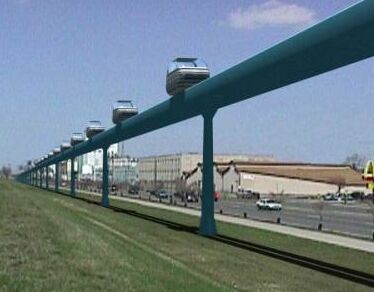
The designers of these systems claim that if we only had the type of investment in PRT systems or at least fixed-guideway systems (like in Minority Report) that we could cure traffic ills and increase the efficient of our roads. Well I’m here to blow the brains out of this transportation zombie. Before I do though, lest I seem like a hypocrite, I am not chastising the designers and engineers of these systems for trying to come up with a better plan or from creating pie in the sky ideas (FutureMBTA anyone?), rather I want to help channel their creative minds away from such a silly concept.
PRT is a laughably complex system. Oh, computers can handle the traffic! People, computers are boxes of metal and plastic that only do something when instructed by a human. What this means is no matter what system we build it will still be at the hands of a person (and given how technology progresses, fewer and fewer persons). Another major problem with such a system (and in my opinion traffic engineering in general) is that it strives to take a large number of individuals, all doing something slightly different, and boil them down to a number. We are not numbers (fight the system yo!) A traffic engineer will look at a road with cars on it and only see the cars, the lanes, and the number of cars per hour in those lanes. He doesn’t see the people and because of this he doesn’t design the roads for the way people actually use them.
People don’t like to wait. People don’t understand numbers the way an engineer does. Think of the age old question of what weighs more, a pound(lbs) of feathers or a pound of lead? How many people would say lead without missing a beat (or after thinking about it for a while)? This issue pertains to transportation in a key way; people don’t like to not be moving. If you are waiting on a train platform for 10 min and then on a train for another 10 min it feels like much longer than 20 min than if you were in a car driving, constantly moving but at a slower speed, the same distance taking the same time. What this means for PRT is that all those little pods moving at the same speed will, by the numbers, make traveling more efficient and cut travel times. But people don’t think about the numbers, no. Imagine you are in one of those pods trying to get your kid to school or to work. In the pictures they show people relaxing as they are whisked to their destination. But isn’t that the promise every technology makes, that your life will be simpler and you will have more free time? Has that ever been the case? What do we do with the free time but think of more work to do. People would hate waiting in line, not being able to have control of where they are going. It works for theme parks because people are there to go on the ride. But back in their real world they very much need to control where they are going.
PRT is a joke because people like to drive. If you have some many people driving to one place then you build a balanced system. The problem we have today is not that there are too many cars, it’s that we built a world that perpetually creates more cars. Mass Transit offers an efficient way of collecting many people together and transporting them effectively, but since we’ve designed a car-only world we are left with half-broken transit systems and a bazzaro world where, when more people use the bus because of higher gas prices, the bus lines get cut because the transit authorities can’t pay for the gas either. PRT is stupid because we in this country value individualism over common good. LOWER TAXES they shout, but then we are gonna need some stimulus money to fix all these pot holes. With cars we can get by but what happens when your PRT guide-way breaks down?
When I hear someone mention Personal Rapid Transit all I think of is, “We already got cars!”

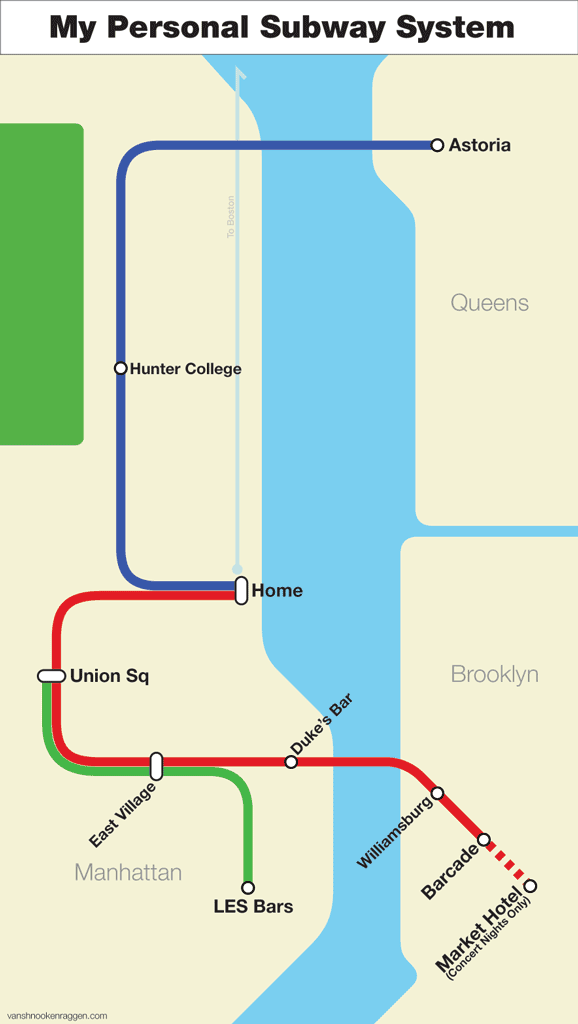
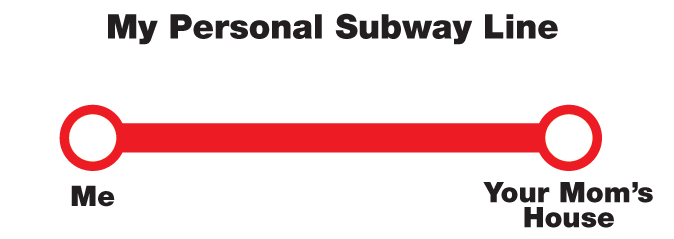
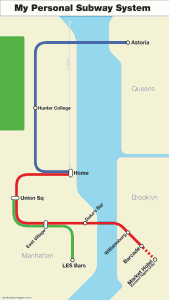

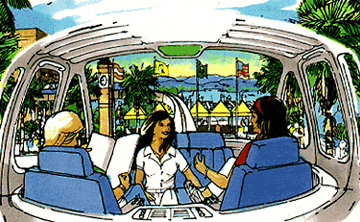
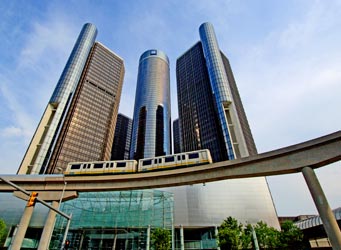
It used to be that the majority of commentaries on PRT were idiotic like this one. The fact that this irrational rant stands out as the exception rather than the rule is an indicator of how far PRT has come in terms of acceptance.
If anyone wishes to see a rational discussion of PRT from someone who doesn’t have an irrational fear of change, see this Boston Globe article:
http://www.boston.com/bostonglobe/ideas/articles/2009/10/04/invasion_of_the_pod_car/
It’s not an irrational fear of change, just a rational fear of stupidity. Such as system works well in the small scale (as I mentioned in the beginning of my post) but on a city level it seems like a ridiculous proposition. The same goes for those who think we should get rid of cars and all ride bikes.
The basic problem is cost per rider. While it’s true it would be cheaper to build in terms of material dollars, the idea of having stations and a large web of overhead tracks all for individuals means that the cost per person would skyrocket. Building a train line and stations makes sense because they can carry many many people. Cars work to fill the gap. PRT just seems like trying to take the best of both worlds to create something that ends up not accomplishing anything.
No, you’re wrong about cost per rider. Please research the current proposals and you will find that many of your assumptions are wrong.
When all factors are considered, PRT is currently viable and cost effective as a transit option in smaller cities. And they are actually more efficient (in cost and energy use) than trains would be, because they are lightweight, have no driver, and operate only when needed. These factors offset the apparent efficiencies of trains, which must run big heavy trains even when demand is low in order to provide non-peak service.
Larger cities still need trains, and that’s not likely to change in the near future. But PRT is a viable option for small cities.
I see what you are saying with small cities but the problem then becomes what to do when the cities grow. PRT works well on a small scale, airports, intercollege campuses.
The infrastructure maintenance would be unaffordable on a larger scale. We can’t even pay to keep our roads in good shape and we use them more than anything else.
“I see what you are saying with small cities but the problem then becomes what to do when the cities grow.”
It’s pretty unlikely that Cincinnati or Sacramento are ever going to become New York or Chicago.
And even New York & Chicago have to subsidize their train systems.
But I can tell you how the “Light” Rail system works in Sacramento, since I live there – about two miles from a Light Rail station.
First, I have to wait for a Bus to take me from the stop (about two hundred yards from my front door) to the train station. Buses run every 15 minutes during rush, every 30 minutes otherwise, except Saturday & Sunday when they run every hour. It’s a 15 minute ride the two miles to the Light rail station because of all the stops.
Once I get to the Light Rail station, I buy a ticket at the vending machine & wait about 10 minutes for the train, at rush – longer off-peak. Then it’s a 30 minute ride downtown & a 10 minute walk to my final destination (I could wait for a bus, but I get there quicker if I walk).
During the summer, I arrive sweating like a pig because the temps outside are in the high 90’s/low 100’s. Total travel time, door to door, just under an hour & 15 minutes.
If I drive – 20 minutes to travel, 10 minutes to park.
If the bus stops were replaced by PRT stops, two hundred yard walk to board, 1 min wait for a pod. Non-stop downtown, no more than a 1/4 mile walk to my final destination.
Me – no car payment, no insurance payment, no gas, no parking = one happy camper.
Your “Personal Subway System” map reminds me of an artistic endeavor of mine that I call “Mapuccino”. These are poster-sized prints that at first glance resemble subway maps. But if you look closely, the stops are personalized to capture different moments in your life. You can find out more about them here: http://www.mapuccino.com/.